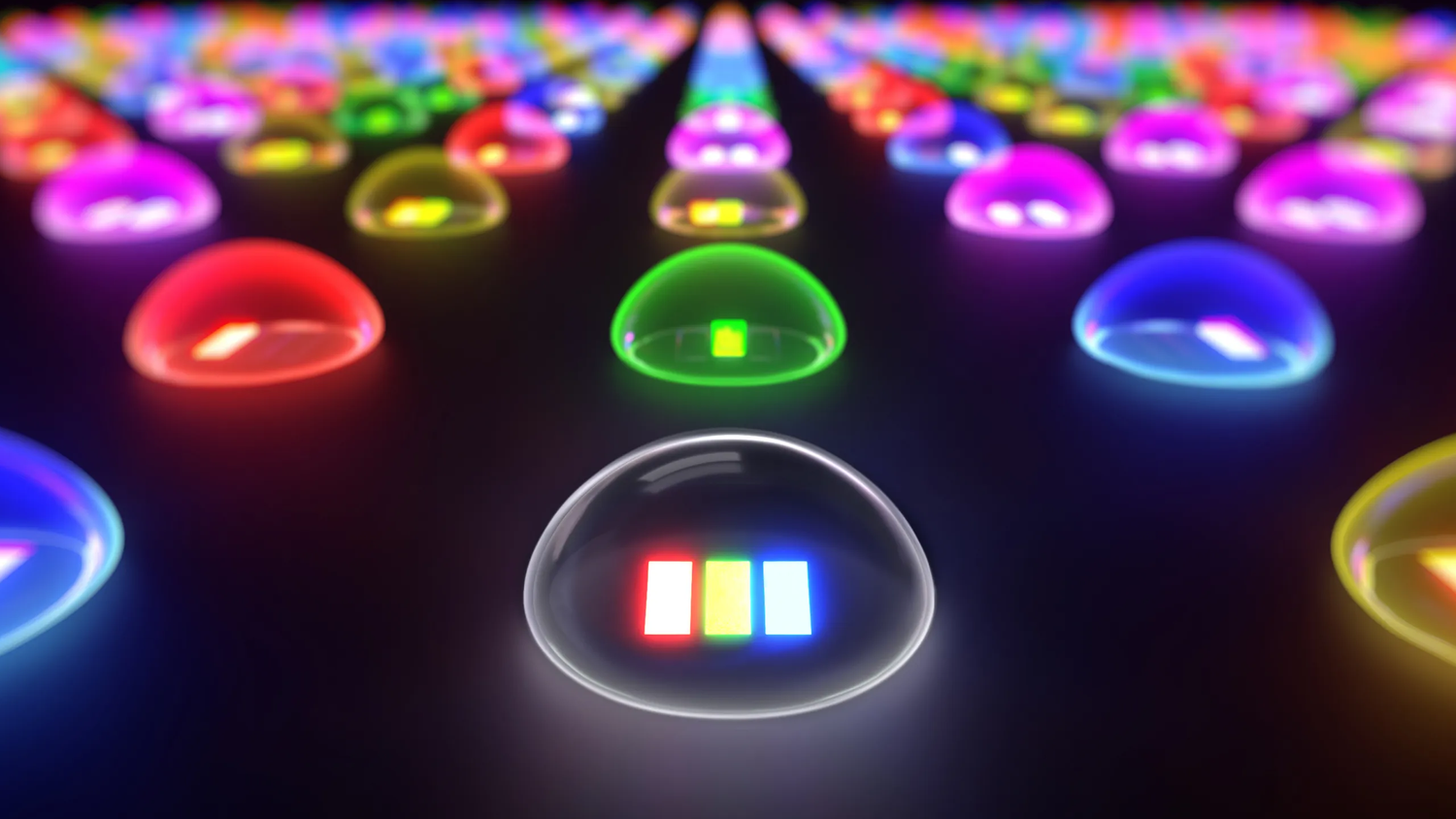Abstract
- RGB mini-LED splits the white backlights of standard mini-LED into purple, inexperienced, and blue diodes, permitting for extra coloration accuracy.
- This accuracy is so excessive that it tops what’s attainable with the most costly quantum-dot OLED TVs, even when OLED retains a distinction benefit.
- Proper now RGB mini-LED is absurdly costly, costing upwards of $20,000. Economies of scale ought to push that all the way down to cheap ranges.
I am truly not in a rush to purchase a new TV, and I encourage most individuals to stay with what they have, so long as it continues to do what they want. I purchased a Hisense mini-LED set final 12 months that is not solely visually spectacular, however greater than able to dealing with HDR streaming and 3D gaming. My solely actual grievance is that its default distant cannot mechanically management the amount of my Sonos Ray soundbar. The truth is, if anybody at Hisense or Sonos is listening, hit me up about the most effective answer.
I am all the time protecting tabs on new TV applied sciences, nonetheless, each for skilled causes and my private finances. One piece of show tech that popped onto my radar just lately is RGB mini-LED, often known as micro-RGB. On the floor, it would not sound a lot completely different than what I’ve now — however in just a few years, OLED TVs may very well be demoted from the gold commonplace to a finances possibility, very like plasma units have been. I am going to clarify each that and what it’s worthwhile to learn about RGB mini-LED typically.
What’s RGB mini-LED?
Greater than easy evolution
To clarify this, I must step again a bit and speak about standard LCDs (liquid crystal shows). Any fashionable LCD relies on a number of LED (light-emitting diode) backlights to truly current a picture. And not using a backlight, an LCD is totally ineffective — you may’t see something.
As a result of a single backlight supplies little or no distinction, the development with LCDs has been in the direction of an ever-increasing variety of LEDs, permitting extra areas of any picture to be dimmed for deeper (although not complete) blacks. Newer TVs are geared up with lots of of LEDs, typically grouped collectively right into a smaller variety of dimming zones.
The first benefit to RGB mini-LED is not distinction — it is coloration copy.
Mini-LED takes this a step additional. As a result of it makes them dramatically smaller, it is attainable to cram hundreds or tens of hundreds of LEDs right into a show panel. The result’s so good that in lots of circumstances, it is tough to inform the distinction versus OLED, even supposing OLED permits particular person pixels to change on and off. You would possibly even desire mini-LED, since OLED units cannot get as brilliant. OLED is superior in a darkened room — however mini-LED can win the day when your TV has to compete with ambient mild.
RGB mini-LED swaps white diodes for separate purple, inexperienced, and blue models, that are additionally smaller than earlier than (therefore micro-RGB as an alternate title). The first benefit to this is not distinction, nonetheless, it is coloration copy. As a result of every coloration channel is independently changeable, RGB mini-LED TVs can obtain as a lot as 95 to 100% of the BT.2020/Rec. 2020 coloration gamut. As a body of reference, it is unlikely that an costly quantum-dot (QD) OLED TV will obtain greater than 92% of these colours.
Can the common particular person choose up the distinction between 92 and 95%, and even 90 and 100%? Most likely not. Certainly, OLED will proceed to reign supreme for individuals who worth distinction and element, not less than till micro-LED turns into inexpensive. However RGB mini-LED does kick one other leg out from below OLED, and will (for a time) grow to be the know-how of selection for individuals who worth coloration accuracy above all else. Actually, there are professional video editors who would kill for 100% gamut protection, and nobody likes the burn-in danger posed by OLED.
Availability and different downsides to RGB mini-LED
It is time to be affected person
The largest drawback is solely value. Presently, a “low cost” 100-inch RGB mini-LED TV from Hisense will set you again $20,000 plus tax. As if that wasn’t absurd sufficient, each Hisense and Samsung are promoting $30,000 units, sized at 116 and 115 inches respectively. You should purchase a brand new electrical automotive for much less should you store round. And I do not learn about you, however I might somewhat spend my cash on a product that may actually take me to different cities or different realities, as a substitute of simply making Blade Runner 2049 look a bit higher than it does on an everyday mini-LED TV. For the time being, RGB mini-LED is an indulgence for the wealthy.
That is the best way of all new TV show applied sciences, nonetheless. When LG shipped its first 4K TV in 2012, that additionally value $20,000, and obtained you a mere 84 inches. By the top of the last decade, units the identical measurement value a fifth that quantity. At present, it is often a horrible mistake to purchase a 1080p TV over the 40-inch mark, should you may even discover one which is not horribly outdated in different respects.
I would not anticipate RGB mini-LED to grow to be dramatically extra inexpensive in 2026.
I can not say precisely how quickly RGB mini-LED will grow to be inexpensive. It is principally a query of scaling up manufacturing — the extra meeting traces are dedicated to the tech, the cheaper manufacturing will grow to be, resulting from elements like effectivity, competitors, and elements prices. That is what introduced OLED to the lots. Think about that the primary OLED TV was an 11-inch Sony mannequin, launched in 2007 for $2,500. In 2025, the tech is so standardized that you will discover it on smartwatches and among the least expensive finances telephones.
I would not anticipate RGB mini-LED to grow to be dramatically extra inexpensive in 2026. When you’ll in all probability see some units beneath $20,000, and probably $10,000, even $2,000 is an excessive amount of for the common particular person, and there isn’t any signal that electronics makers are in a rush to drive issues down. On prime of all the pieces else, the financial scenario will not be serving to these excessive prices. Many economies are turbulent, together with the US, which has directed import tariffs towards the nations the place most TVs are assembled, amongst them China, Mexico, Vietnam, and South Korea. Comparatively few TVs are manufactured inside US borders.
Are there another downsides to RGB mini-LED? Other than it being outclassed by OLED in distinction, not likely. It may very well be that by the point it is actually inexpensive, extra effort can have been pumped into micro-LED, which may translate into RGB mini-LED being a short-lived know-how very like plasma. There was a time when plasma TVs have been all the fad — by 2015, although, they have been all however lifeless, changed by OLED and more and more higher LCDs. Any plasma set you got was in all probability at a reduction, realizing full properly that it might be thought-about out of date in just a few years.
Time will inform which approach the wind blows. If I have been a betting man, although, I might put my cash on RGB mini-LED taking the early lead, and remaining related for a very long time. You will not must toss a set on the junk pile in 2030 until you unintentionally break it.
Trending Merchandise

SAMSUNG FT45 Sequence 24-Inch FHD 1...

ASUS RT-AX1800S Dual Band WiFi 6 Ex...













